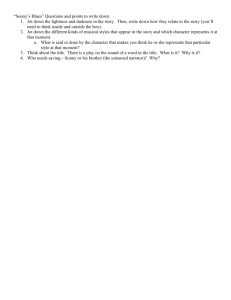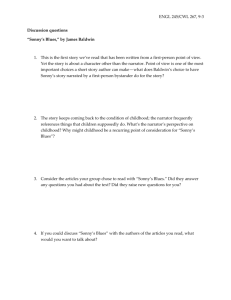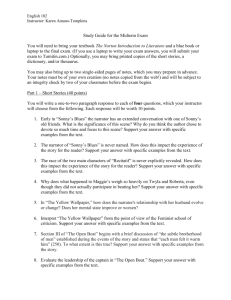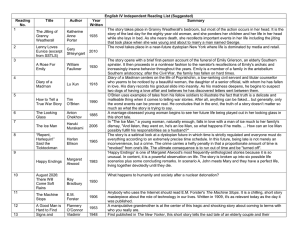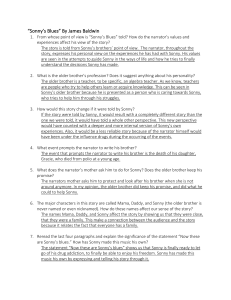Sonnys Blues questions
advertisement
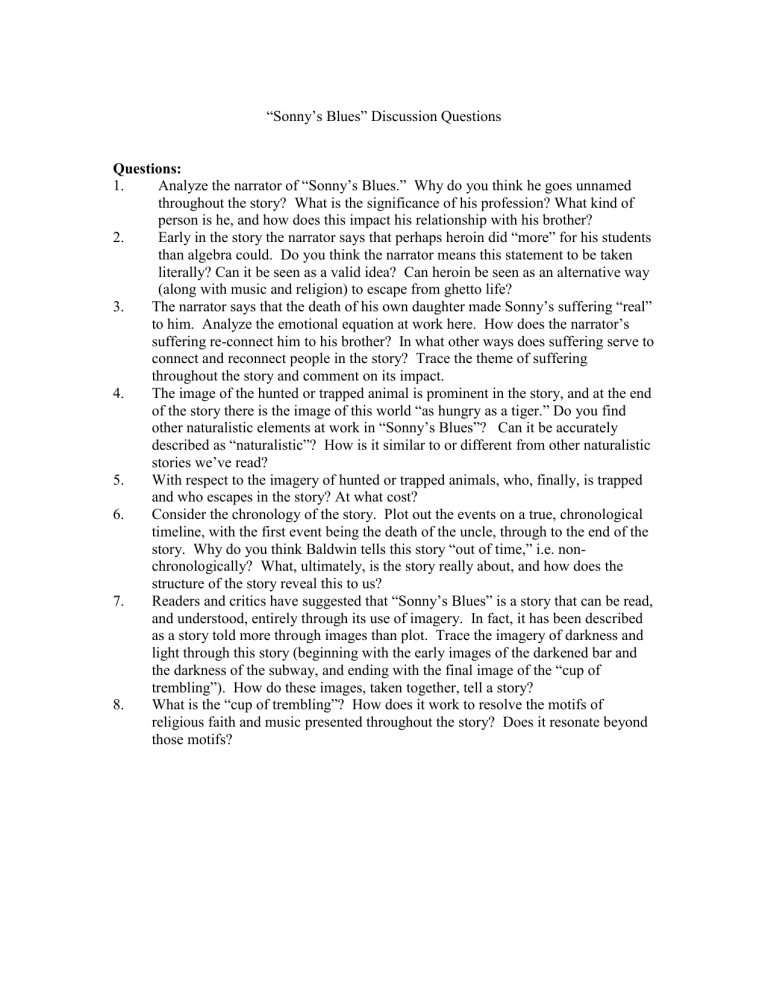
“Sonny’s Blues” Discussion Questions Questions: 1. Analyze the narrator of “Sonny’s Blues.” Why do you think he goes unnamed throughout the story? What is the significance of his profession? What kind of person is he, and how does this impact his relationship with his brother? 2. Early in the story the narrator says that perhaps heroin did “more” for his students than algebra could. Do you think the narrator means this statement to be taken literally? Can it be seen as a valid idea? Can heroin be seen as an alternative way (along with music and religion) to escape from ghetto life? 3. The narrator says that the death of his own daughter made Sonny’s suffering “real” to him. Analyze the emotional equation at work here. How does the narrator’s suffering re-connect him to his brother? In what other ways does suffering serve to connect and reconnect people in the story? Trace the theme of suffering throughout the story and comment on its impact. 4. The image of the hunted or trapped animal is prominent in the story, and at the end of the story there is the image of this world “as hungry as a tiger.” Do you find other naturalistic elements at work in “Sonny’s Blues”? Can it be accurately described as “naturalistic”? How is it similar to or different from other naturalistic stories we’ve read? 5. With respect to the imagery of hunted or trapped animals, who, finally, is trapped and who escapes in the story? At what cost? 6. Consider the chronology of the story. Plot out the events on a true, chronological timeline, with the first event being the death of the uncle, through to the end of the story. Why do you think Baldwin tells this story “out of time,” i.e. nonchronologically? What, ultimately, is the story really about, and how does the structure of the story reveal this to us? 7. Readers and critics have suggested that “Sonny’s Blues” is a story that can be read, and understood, entirely through its use of imagery. In fact, it has been described as a story told more through images than plot. Trace the imagery of darkness and light through this story (beginning with the early images of the darkened bar and the darkness of the subway, and ending with the final image of the “cup of trembling”). How do these images, taken together, tell a story? 8. What is the “cup of trembling”? How does it work to resolve the motifs of religious faith and music presented throughout the story? Does it resonate beyond those motifs?
